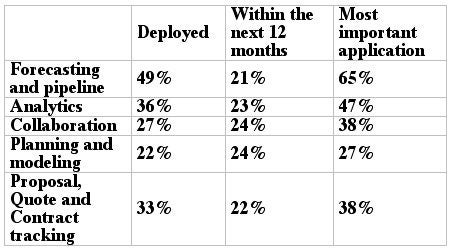Individually, they may lack the sheer power and influence of large corporations, but collectively, small and midsized businesses (SMBs) pack a lot of technology purchasing power. This year, the world’s SMBs will spend estimated $568 billion in IT products and services, predicts technology research firm IDC. By 2021, that figure will grow by over $100 […]
Datamation content and product recommendations are
editorially independent. We may make money when you click on links
to our partners.
Learn More
Individually, they may lack the sheer power and influence of large corporations, but collectively, small and midsized businesses (SMBs) pack a lot of technology purchasing power.
This year, the world’s SMBs will spend estimated $568 billion in IT products and services, predicts technology research firm IDC. By 2021, that figure will grow by over $100 billion to $676 billion.
“SMB IT spending growth continues to track about two percentage points higher than GDP growth across regions,” said Ray Boggs, vice president of SMB Research at IDC, in a statement. “But beneath that slowly rising tide are faster moving currents that reflect the changing ways SMBs are acquiring and deploying technology.”

Those currents include a dramatic shift in the IT priorities of smaller organizations and therefore a change in their technology spending strategies.
Hardware, software and IT services currently account for more than 85 percent of technology spending by SMBs, with hardware ranking as the top category. It’s a state of affairs, that will soon change. In 2019, both the software and IT services segments will surpass hardware in what will become a ” watershed year,” stated the analyst group.
The software category will expand at compound annual growth rate (CAGR) of 6.9 percent while IT services registers a CAGR of 3.7 percent during IDC’s forecast period (2016 – 2021). Business services will lead the pack with a CAGR of 7.1 percent while hardware trails with a 1.8 percent CAGR.
Customer relationship management (CRM), enterprise resource management (ERM), and content applications will generate a third of all software sales to SMBs this year. PCs and peripherals will set the tone on the hardware front.
Regionally, the U.S. market will take first place this year, generating $171.3 billion in sales to SMBs. In the years ahead, a third of all IT spending by SMBs will occur in North America, followed by Western Europe and Asia-Pacific excluding Japan.
In Western Europe, where SMBs “can represent a difficult target market” because of the technology gap that typically exists between them and larger organizations, area startups are shaking things up, noted Angela Vacca, senior research manager of Customer Insights and Analysis at IDC.
She said the industry is witnessing “the rise of SMBs that were born in the digital era, that are very innovative and attracted by 3rd Platform and Innovation Accelerators (particularly cloud, mobility, and IoT). Even if these companies represent only a small percentage of the overall SMB market, they can set the scene and pave the way to a broader adoption of innovative IT solutions,” in a statement.
Pedro Hernandez is a contributing editor at Datamation. Follow him on Twitter @ecoINSITE.
-
Huawei’s AI Update: Things Are Moving Faster Than We Think
FEATURE | By Rob Enderle,
December 04, 2020
-
Keeping Machine Learning Algorithms Honest in the ‘Ethics-First’ Era
ARTIFICIAL INTELLIGENCE | By Guest Author,
November 18, 2020
-
Key Trends in Chatbots and RPA
FEATURE | By Guest Author,
November 10, 2020
-
Top 10 AIOps Companies
FEATURE | By Samuel Greengard,
November 05, 2020
-
What is Text Analysis?
ARTIFICIAL INTELLIGENCE | By Guest Author,
November 02, 2020
-
How Intel’s Work With Autonomous Cars Could Redefine General Purpose AI
ARTIFICIAL INTELLIGENCE | By Rob Enderle,
October 29, 2020
-
Dell Technologies World: Weaving Together Human And Machine Interaction For AI And Robotics
ARTIFICIAL INTELLIGENCE | By Rob Enderle,
October 23, 2020
-
The Super Moderator, or How IBM Project Debater Could Save Social Media
FEATURE | By Rob Enderle,
October 16, 2020
-
Top 10 Chatbot Platforms
FEATURE | By Cynthia Harvey,
October 07, 2020
-
Finding a Career Path in AI
ARTIFICIAL INTELLIGENCE | By Guest Author,
October 05, 2020
-
CIOs Discuss the Promise of AI and Data Science
FEATURE | By Guest Author,
September 25, 2020
-
Microsoft Is Building An AI Product That Could Predict The Future
FEATURE | By Rob Enderle,
September 25, 2020
-
Top 10 Machine Learning Companies 2020
FEATURE | By Cynthia Harvey,
September 22, 2020
-
NVIDIA and ARM: Massively Changing The AI Landscape
ARTIFICIAL INTELLIGENCE | By Rob Enderle,
September 18, 2020
-
Continuous Intelligence: Expert Discussion [Video and Podcast]
ARTIFICIAL INTELLIGENCE | By James Maguire,
September 14, 2020
-
Artificial Intelligence: Governance and Ethics [Video]
ARTIFICIAL INTELLIGENCE | By James Maguire,
September 13, 2020
-
IBM Watson At The US Open: Showcasing The Power Of A Mature Enterprise-Class AI
FEATURE | By Rob Enderle,
September 11, 2020
-
Artificial Intelligence: Perception vs. Reality
FEATURE | By James Maguire,
September 09, 2020
-
Anticipating The Coming Wave Of AI Enhanced PCs
FEATURE | By Rob Enderle,
September 05, 2020
-
The Critical Nature Of IBM’s NLP (Natural Language Processing) Effort
ARTIFICIAL INTELLIGENCE | By Rob Enderle,
August 14, 2020
SEE ALL
APPLICATIONS ARTICLES










